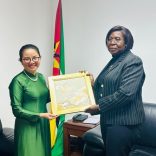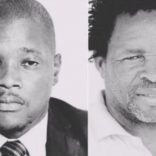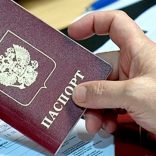Mozambican PM pledges to promote comprehensive cooperation with Vietnam
Mozambique: Nyusi declares second state of emergency – AIM report

Photo: Noticias
Mozambican President Filipe Nyusi on Wednesday night decreed a second state of emergency, as the legal framework for the government’s restrictive measures, imposed to halt the spread of the Covid-19 respiratory disease.
Mozambican jurists disagree as to whether this move is constitutional. The constitution says that a state of emergency can be decreed for 30 days, and then extended no more than three times, each for another 30 days. The first state of emergency took effect on 1 April, and the third extension expired 120 days later, on 29 July.
Nyusi waited a week before declaring a second state of emergency, which will take effect on Saturday, and last until midnight on 6 September. The constitution says nothing about whether two states of emergency can be declared in the same year.
One of the most prominent voices opposing a second state of emergency was that of Teodato Hunguana, an outspoken member of the ruling Frelimo Party, and a former judge on the Constitutional Council, the country’s highest body in matters of constitutional law.
Speaking to the weekly paper “Canal de Mocambique”, Hunguana said declaring a second state of emergency “would be a great invention”. He believed the Constitution’s limits on extending a state of emergency were imposed by those who wrote the constitution precisely “to avoid the abuse of this mechanism, since it involves the suspension of fundamental rights”.
Hunguana believed that, in the absence of amendments to the Constitution, the existing law on disaster management could be used to cover the Covid-19 restrictions. This law, he said, would be applicable to pandemics “with the necessary adaptations”.
The government disagrees, and has drafted a new bill on risk and disaster management. Nyusi said he is submitting this bill to the country’s parliament, the Assembly of the Republic, as a matter of urgency.
Speaking to reporters on Tuesday, the government spokesperson, Deputy Justice Minister Filimao Suaze, said the existing law was intended to deal with such disasters as floods and cyclones, but not pandemics.
In his Wednesday address to the nation, Nyusi said the decision to opt for a second state of emergency “was not easy, and it is not easy to announce it. After a lot of thought and consultation, we believe that this option is that which best serves the interests of our people”.
He added that he had been “guided by the supreme interest of safeguarding public health”, and had been duly advised by the Technical and Scientific Commission established by the government.
So all the government’s measures to contain the spread of Covid-19 remain in force. These include the obligatory wearing of masks in public places, social distancing (of at least 1.5 metres between people in places such as markets), the closure of bars and places of nocturnal entertainment, and a ban on religious services, political, social and cultural gatherings, and team sports activities.
Nyusi argued that two lines of action must be followed simultaneously – restrictive measures to suppress the coronavirus, and the cautious, gradual re-launching of social and economic activities. The purpose, he added, was to make it possible to lift the state of emergency as soon as possible.
Restrictions will be gradually eased, Nyusi promised. He envisaged three phases of relaxation, starting on 18 August with “low risk activities”.
As from that date universities and other institutions of higher education will start reopening. Classes can resume in universities, teacher training colleges, military and police academies, and professional training institutes.
Restrictions on funerals will be relaxed. Nyusi said the maximum number of people who can attend a funeral will rise from 20 to 50 – except in cases where the deceased died of Covid-19, and in those cases the number of participants remains ten. Religious services may resume, but with a maximum of 50 people inside a place of worship at any one time.
In the second phase, beginning on 1 September, “medium risk” activities can resume. Nyusi said this would mean the full resumption of classes in professional and technical education, and the reopening of driving schools. Motorised sports can resume, and cinemas, theatres, gymnasiums and casinos can re-open.
Only from 1 October will the third phase begin with the resumption of “high risk” activities. The main area here is the resumption of classes in the 12th, pre-university grade of secondary education. This was initially scheduled for 27 July, but had to be postponed because of the poor hygiene conditions in many schools, lacking a reliable source of water and decent sanitation.
As for pre-school, primary and secondary education, Nyusi said these creches and schools will only re-open if they meet the conditions laid down by the health authorities.
Nyusi said that bars and other places whose prime purpose is to sell alcoholic drinks will remain closed “until adequate conditions are confirmed for their reopening”.
International flights will resume as long as health control measures are respected. Detailed regulations on this, and many other matters, will be announced soon, he promised.
The viability of this plan of gradual relaxation, Nyusi warned, depends on the country’s capacity to manage the development of the pandemic, on the ability of the national health system to respond to the needs, and on developing a robust testing capacity.
From 22 March, when the first Covid-19 case was detected, up to Wednesday, 63,725 people have been tested for the coronavirus. 2,079 tested positive for the virus, 15 of whom have died.
This makes Mozambique the country in mainland southern Africa least affected by the virus. The number of diagnosed cases in Mozambique is 61 per million inhabitants. The only country in the region doing better is Angola with 34.9 cases per million inhabitants. (Tanzania claimed 8.5 cases per million, but has not issued any Covid-19 figures since late April).
The Mozambican Covid-19 death rate is 0.4 per million inhabitants, lower than any other mainland southern African country. South Africa has the tragically high death rate of 137.5 per million, followed by Zambia with nine deaths per million inhabitants.













Leave a Reply
Be the First to Comment!
You must be logged in to post a comment.
You must be logged in to post a comment.